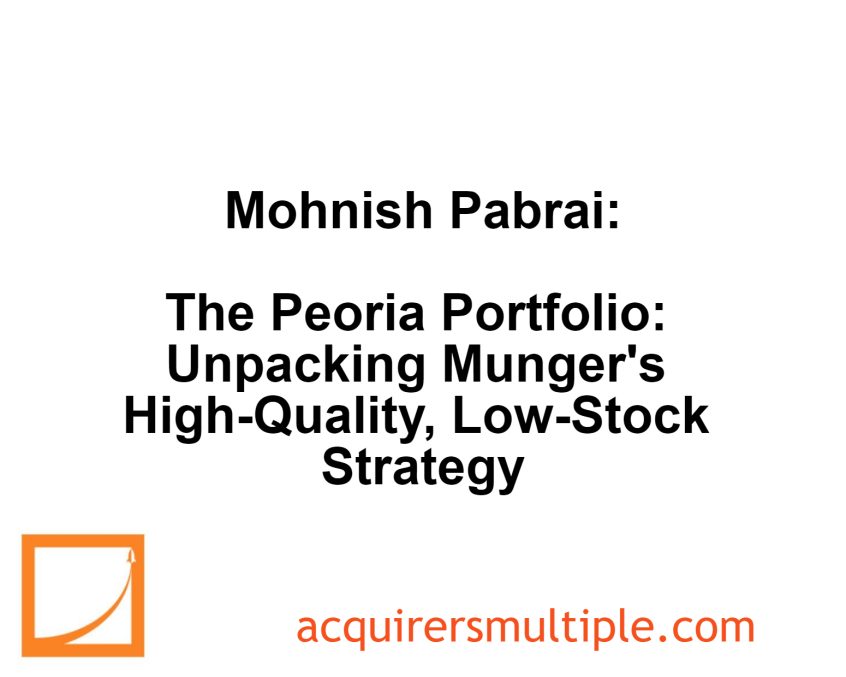During his Q&A session at Clemson University, Mohnish Pabrai discussed his approach to diversification which contrasts with the traditional view that spreading investments across a variety of assets reduces risk.
Pabrai argues that diversification can be overrated, and that owning a few high-quality businesses can provide sufficient protection against market downturns. He emphasizes the importance of careful selection and deep understanding of each investment, rather than simply spreading money around in a shotgun approach.
Here’s an excerpt from the Q&A session:
Pabrai: So Charlie Munger says that if you owned the Ford dealership or you know partially or completely the Ford dealership in Peoria Illinois.
And you owned the McDonald’s franchise in Peoria Illinois. And you owned the best apartment building in Peoria Illinois.
And those were the only three assets you had. And you had like kind of one third into each of them, and basically you could have partial ownership or complete ownership, either way let’s say those were all listed businesses for example.
He would consider that a extremely well diversified good portfolio that would likely do really well for you. And so if you think of a portfolio like that, it’s all in a single geography in a small town and it’s in three businesses.
So if you were going to look at a portfolio of stocks I think once you get past about 10 stocks in a portfolio there are diminishing returns, so you’re probably going to hurt yourself more than you’re going to help yourself when you buy the 11th business.
Because the 11th business will not be as well understood by you as the number two business in that portfolio, and when you go from 10 stocks to 50 stocks for example you don’t gain that much with the diversification.
So what I have always tried to do in my funds is basically, I set an upper limit from a cost point of view of 10% in a single position, but I don’t trim the position if it grows.
So like for example when we were buying the the REIT in Turkey we put the 8 million or whatever in and you know that becomes 150 million or something.
It hasn’t been trimmed because even if it’s valued by the market at 150 million it’s actually worth about 400/450 million based on the current liquidation value of the business.
And if I look at intrinsic value, which would be even higher than liquid liquidation value, it would be even higher than that.
So in one of my funds for example because of the Turkish bets, we’ve had three Turkish bets, they probably make up like 65/70% of the pie.
But we own the dominant Coke bottler in Turkey, and they bottle Coke in about 12 different countries. If you own a Coke bottler or a Pepsi bottler in most geographies around the world it’s a license to print money, highly unlikely you would not do well with that.
And we own an airport operator in Turkey, they operate about like 15 different airports, and that’s another monopoly type business has done extremely well.
So basically I look at that as like the three businesses in Peoria and so that’s kind of how we go about looking at things.
You can watch the entire Q&A session here:
For all the latest news and podcasts, join our free newsletter here.
Don’t forget to check out our FREE Large Cap 1000 – Stock Screener, here at The Acquirer’s Multiple:



